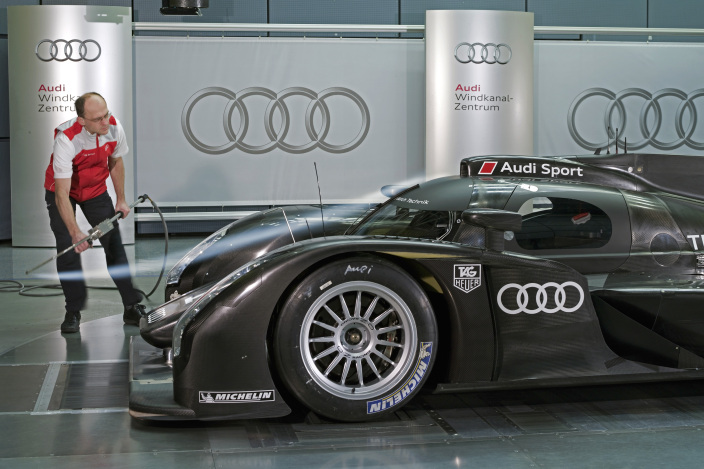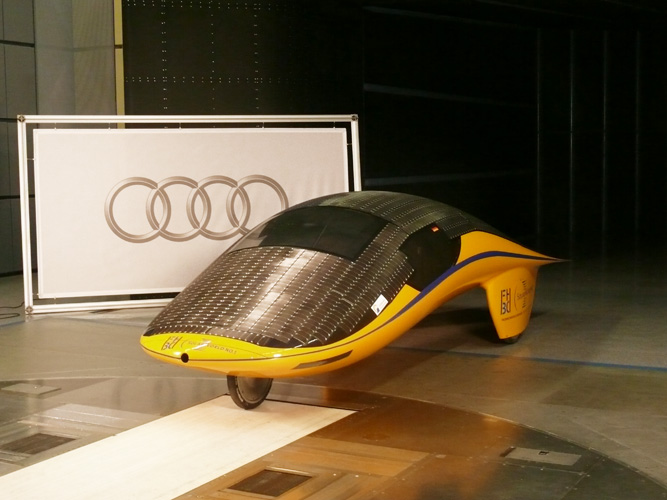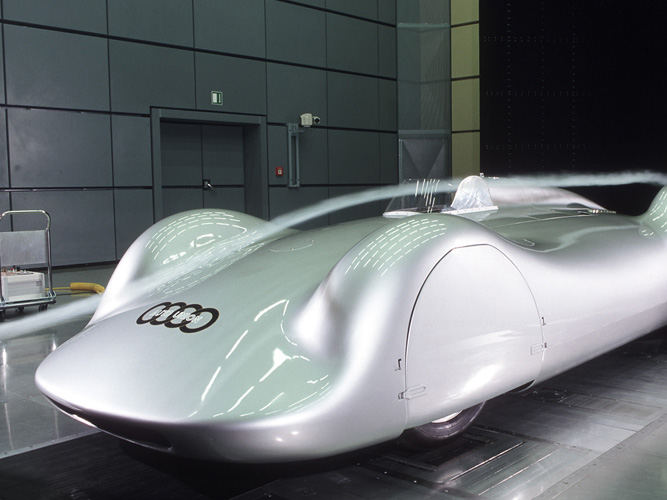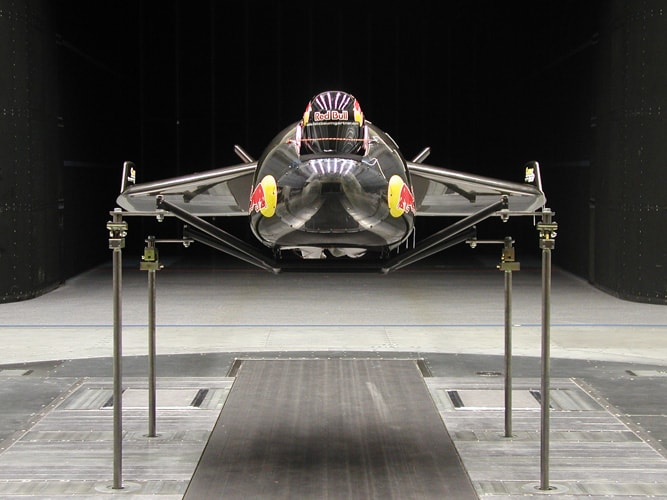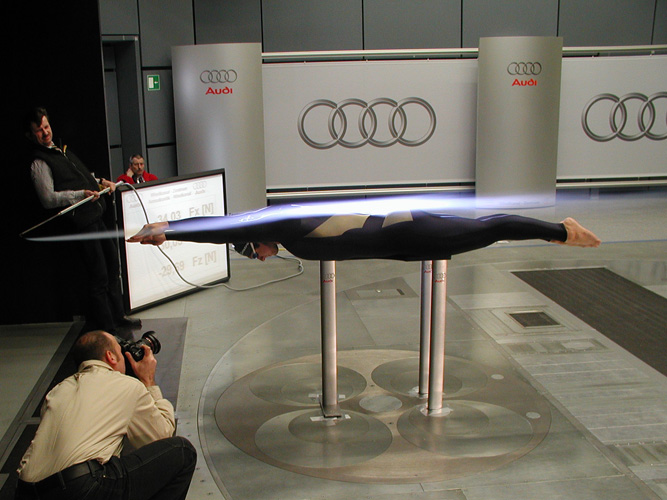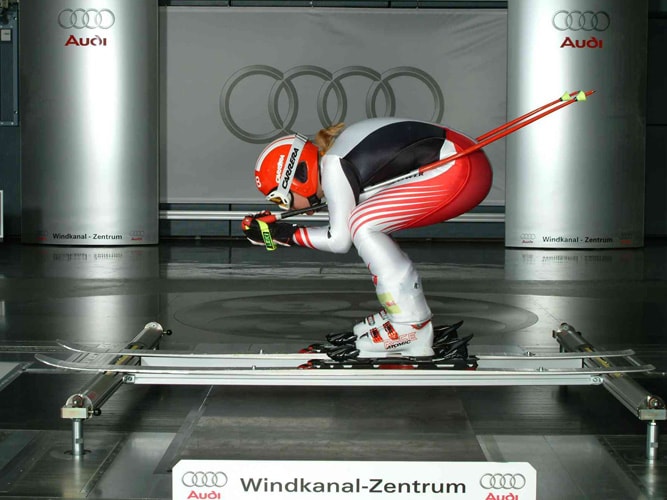Only a few weeks are left before the start of this year's edition of the Le Mans 24 hours race, and those planning to attend have pretty much wrapped up the major work on the vehicles that will take to the starting grid. Only fine tuning is left, those little details that can make the difference during the world's most famous on-track endurance race.
Last week, German manufacturer Audi, one of the serious contenders to the podium for years, gave us a little insight into how they've managed to develop the R18 TDI with which they'll tackle this year's Le Mans. Audi presented a wind tunnel of a special breed to the world, one that is not new, nor unique, but that surely deserves a closer look.
Located at Audi's huge facility complex in Ingolstadt, the Wind Tunnel Center has been at the center of car development for the four-ring branded cars for years (or, to be more precise, since 2008). What makes this wind tunnel a little more special than the other ones used by the majority of the car makers is the fact that it can simulate any kind of weather you can think of.
Having cost Audi no less than EUR20 million, the tunnel is the first of its kind to generate winds with speeds of up to 300 km/h (186 mph).
DESIGN
The climatic wind tunnel is the third one built by Audi (after the thermal and aeroacoustic ones) and, just like the other two, follows what it is called a Gottinger principle, meaning that it features a closed air circuit. The tunnel is built vertically. The test section of the tunnel, or the place where all the action takes place, is 10 meters long.
The air that is pushed through the tunnel by the fan travels through two corners to the antechamber, passes through a screen and gets compressed by 6:1 through the nozzle. After that, it is sent into the open test section, where it is recaptured in an adjustable funnel and guided back to the fan past two more corners.
The water that might poor into the tunnel during the tests has no way to go, as the floor of the test section is watertight. The rain water itself is collected in channels and drained away.
But temperatures at extreme levels are not the only things Audi models are likely to encounter. Various driving conditions can be simulated as well, giving the entire testing process a new dimension. While stationary, cars can be whipped and splashed with either rain of up to 2,500 liters per hour or sunlight with up to 1,000 watts per square meter. At the same time, the relative atmospheric humidity can be raised to 40 g/kg.
The tunnel has been built in order to help Audi in three major areas of car design: improve in-cabin comfort, by better designing the air-conditioning system in the passenger compartment, improve performance and efficiency by providing better cooling for the engine and its auxiliary components and increase the safety of the cars by better designing the windscreen wipers.
Before entering the test chamber, all the cars had to go through the same pre-conditioning process. In a so-called soak room, Audi subjects the cars to a temperature range of minus 40 degrees Celsius to plus 50 degrees Celsius, regardless of what the conditions in the wind tunnels itself will be.
Aside for cars, the Audi Climatic Wind Tunnel has been used to test everything a potential client wanted to test. That includes, at times, even athletes, like swimmers, who step on the ramp to have both their posture or some new type of material for their suits tested.
The air that is pushed through the tunnel by the fan travels through two corners to the antechamber, passes through a screen and gets compressed by 6:1 through the nozzle. After that, it is sent into the open test section, where it is recaptured in an adjustable funnel and guided back to the fan past two more corners.
The water that might poor into the tunnel during the tests has no way to go, as the floor of the test section is watertight. The rain water itself is collected in channels and drained away.
WHAT THE TUNNEL CAN DO
As one of the most advanced wind tunnels in the world, there's little the 10,000 square meter facility can't do, in terms of simulating weather, at least. In terms of temperature, the tunnel is capable of replicating the conditions Audi cars are likely to encounter on the road, starting with freezing minus 25 Celsius temperatures and ending with scorching heat of up to 55 degrees Celsius. As said, the tunnel is also capable of generating winds with tremendous speeds, generated by the 2.4 megawatts fan.But temperatures at extreme levels are not the only things Audi models are likely to encounter. Various driving conditions can be simulated as well, giving the entire testing process a new dimension. While stationary, cars can be whipped and splashed with either rain of up to 2,500 liters per hour or sunlight with up to 1,000 watts per square meter. At the same time, the relative atmospheric humidity can be raised to 40 g/kg.
WHAT THE TUNNEL TESTS
When it decided to spend a fortune for the creation of the climatic wind tunnel, Audi had one thing in mind: make its cars better by testing more aspects of a car and the car's reaction to the environment as a whole.The tunnel has been built in order to help Audi in three major areas of car design: improve in-cabin comfort, by better designing the air-conditioning system in the passenger compartment, improve performance and efficiency by providing better cooling for the engine and its auxiliary components and increase the safety of the cars by better designing the windscreen wipers.
Before entering the test chamber, all the cars had to go through the same pre-conditioning process. In a so-called soak room, Audi subjects the cars to a temperature range of minus 40 degrees Celsius to plus 50 degrees Celsius, regardless of what the conditions in the wind tunnels itself will be.
Aside for cars, the Audi Climatic Wind Tunnel has been used to test everything a potential client wanted to test. That includes, at times, even athletes, like swimmers, who step on the ramp to have both their posture or some new type of material for their suits tested.

